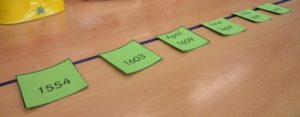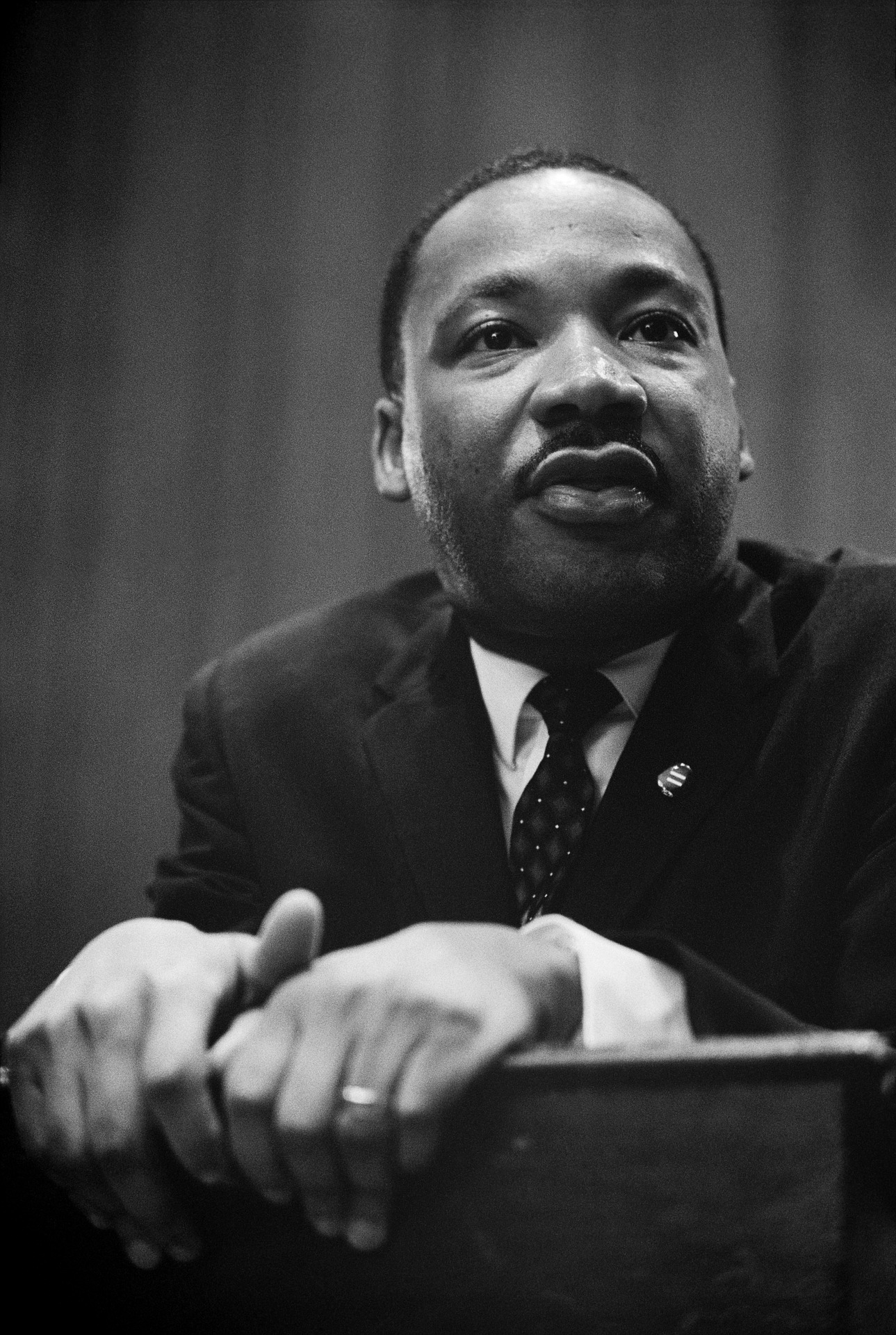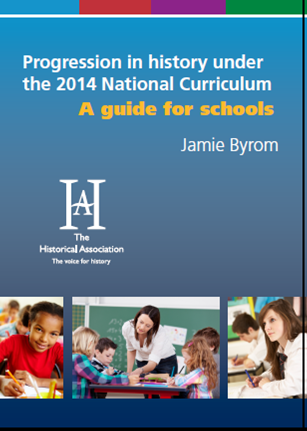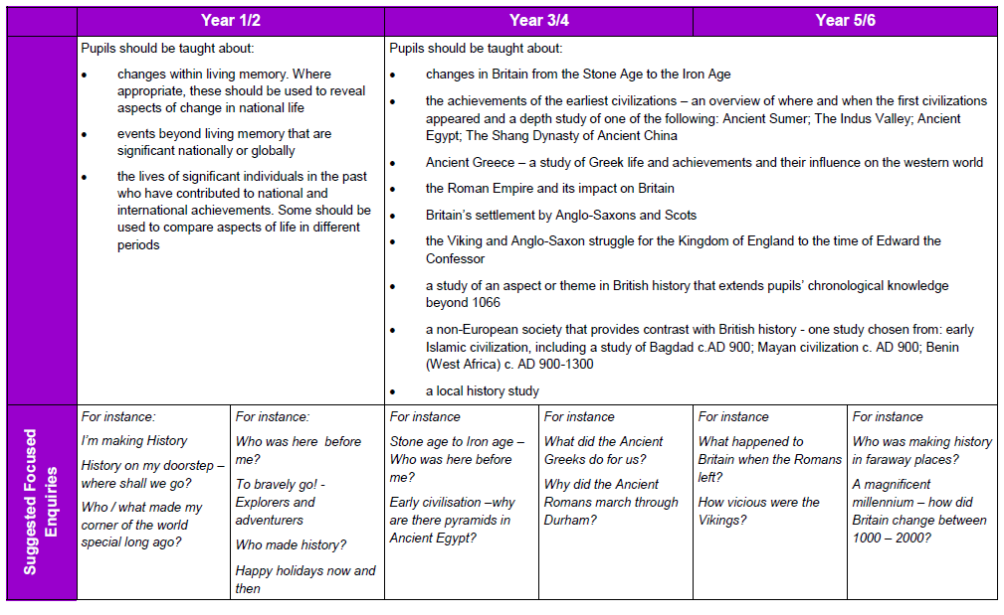How to teach history
There is no single 'best' way to teach history. Research suggests that good history teachers know the content, use a variety of approaches, explicitly teach the skills of historical inquiry and analysis, tailor learning opportunities to suit their students' stage of development, and encourage deep understanding.
Activities
There is room for a range of teaching and learning activities in the history classroom: a story well-told by the teacher, a museum display (actual or digital), model-making, the construction of timelines, comprehension and source analysis activities, oral history interviews, site studies, simulated excavations, problem-solving exercises, role plays and debates. Activities like these can be tailored to suit students' stage of development.
Approaches
Approaches to pedagogy can be teacher-centred or student generated, inquiry based or teacher directed, completed individually, in pairs, groups, or as a whole class, and involve digital resources to varying degrees. The important thing is that learning activities relate to each other, encourage historical thinking and lead to the learning goal in a coherent way.
Resources
A variety of resources should be used in the history classroom, including documents, photographs, artefacts and people (as guest speakers or interview subjects). Historical places make great resources: museums, monuments and heritage sites (actual or virtual), particularly in the local area. Film, historical fiction, works of art, history textbooks and history websites offer a wonderful range of resources. Resources can be provided by the teacher or students.
Putting it all together
To teach for historical understanding, teachers need to
become familiar with the historical content and concepts they need to teach
understand the skills and methods of historical inquiry
be clear about the learning goal (knowledge and understanding and skills)
plan a coherent learning sequence to enable students to achieve the learning goal
Chronology
Chronology is the air history breathes. It enables pupils to place their learning within the bigger picture and better remember historical people, periods and events. Without chronology, children’s historical understanding will remain limited. Read more
Teaching Primary History
Kate Smyth: history in the primary classroom (Video, 6:55)
Kate Smyth is a former primary school teacher and is currently Lecturer in Primary Method at Sydney University.
How do you teach primary history?
Some thoughts from Tim Lomas, Deputy President of the Historical Association.
• History can be made meaningful even to very young children
• Content is of importance but that this is underpinned by key concepts such as chronology, change, causation and evidence
• Variety is important
• Effective learning benefits from an enquiry approach
• Pupils should be introduced to a variety of source materials, including some from outside the classroom
• Understanding is improved by making links, comparisons and contrasts with the different themes and content covered, as well as with other curriculum areas
Evidence also suggests that many primary age pupils enjoy history when adopting these approaches. Consistently, surveys about pupil motivation and enjoyment suggest that they relish variety, active approaches, an emphasis on people and what makes them tick – as one teacher described it “a mix of the detective story and the soap opera”. The story still matters in history
Why Use Primary Sources?
Primary sources provide a window into the past—unfiltered access to the record of artistic, social, scientific and political thought and achievement during the specific period under study, produced by people who lived during that period.
Bringing young people into close contact with these unique, often profoundly personal, documents and objects can give them a very real sense of what it was like to be alive during a long-past era.
1. Engage students
- Primary sources help students relate in a personal way to events of the past and promote a deeper understanding of history as a series of human events.
- Because primary sources are snippets of history, they encourage students to seek additional evidence through research.
- First-person accounts of events helps make them more real, fostering active reading and response.
2. Develop critical thinking skills
- Many curriculum objectives support teaching with primary sources, which require students to be both critical and analytical as they read and examine documents and objects.
- Primary sources are often incomplete and have little context. Students must use prior knowledge and work with multiple primary sources to find patterns.
- In analysing primary sources, students move from concrete observations and facts to questioning and making inferences about the materials.
- Questions of creator bias, purpose, and point of view may challenge students’ assumptions, this is usually a healthy process that develops a more critical approach to the subject.
3. Construct knowledge
- Inquiry into primary sources encourages students to wrestle with contradictions and compare multiple sources that represent differing points of view, confronting the complexity of the past.
- Students construct knowledge as they form reasoned conclusions, base their conclusions on evidence, and connect primary sources to the context in which they were created, synthesizing information from multiple sources.
- Integrating what they glean from comparing primary sources with what they already know, and what they learn from research, allows students to construct content knowledge and deepen their understanding.
[embedyt] https://www.youtube.com/watch?v=GoKzCff8Zbs[/embedyt]
[embedyt] http://www.youtube.com/watch?v=cqXHO7bTPnw[/embedyt]
Document Analysis Worksheets
Document analysis is the first step in working with primary sources. Teach your students to think through primary source documents for contextual understanding and to extract information to make informed judgments.
Use these worksheets — for photos, written documents, artefacts, posters, maps, cartoons, videos, and sound recordings — to teach your students the process of document analysis.
Follow this progression:
- The first few times you ask students to work with primary sources, and whenever you have not worked with primary sources recently, model careful document analysis using the worksheets. Point out that the steps are the same each time, for every type of primary source:
- Meet the document.
- Observe its parts.
- Try to make sense of it.
- Use it as historical evidence.
- Once students have become familiar with using the worksheets, direct them to analyze documents as a class or in groups without the worksheets, vocalizing the four steps as they go.
- Eventually, students will internalize the procedure and be able to go through these four steps on their own every time they encounter a primary source document. Remind students to practice this same careful analysis with every primary source they see.
Don’t stop with document analysis though. An analysis is just the foundation. Move on to activities in which students use the primary sources as historical evidence, like on DocsTeach.org.
Worksheets for Novice or Younger Students, or Those Learning English
- Photograph (PDF)(HTML)
- Written Document (PDF)(HTML)
- Artifact or Object (PDF)(HTML)
- Poster (PDF)(HTML)
- Map (PDF)(HTML)
- Cartoon (PDF)(HTML)
- Video (PDF)(HTML)
- Sound Recording (PDF)(HTML)
Worksheets for Intermediate or Secondary Students
- Photograph (PDF)(HTML)
- Written Document (PDF)(HTML)
- Artifact (PDF)(HTML)
- Poster (PDF)(HTML)
- Map (PDF)(HTML)
- Cartoon (PDF)(HTML)
- Video (PDF)(HTML)
- Sound Recording (PDF)(HTML)
Teach students the process of document analysis, the foundation for working with primary sources.
Focusing on Details: Discussion Topic
Showcase one document while posing a question, comment, or directions for students.
Focusing on Details: Spotlight
Highlight a specific part of a document.
Focusing on Details: Zoom/Crop
Intrigue students about a particular document and give them practice forming hypotheses.
Focusing on Details: Compare and Contrast
Display two to four documents to prompt students to observe and point out similarities and differences.
Focusing on Details: White Out/Black Out
Teach students to use visual cues and context to understand a document.
Finding a Sequence
Present primary sources and challenge students to sequence them based on careful document analysis.
Making Connections
Present primary sources as a string of documents and help students make connections among those documents and the historical events they illustrate.
Link primary sources to locations on a map to practice spatial thinking and understand the impact of geographic factors in history.
Pair documents concerning a historical event, concept, or figure with descriptions, questions, or other documents to impress upon students that the whole is derived of smaller parts.
Turn primary sources into historical evidence that students sort through and evaluate to draw historical conclusions.
Introduce students to primary source documents containing historical data and encourage them to consider the source, the presentation style, and the intended impact of the material.
Progression in History Skills
The resources below have been developed to support the development of History through out Y1 - Y6. They are based on the National Curriculum of England, but they do offer a guide to the way that continuity and progression can be addressed so that there is a whole school coherence to the curriculum.
These skills would then build into the monitoring and evaluation process to ensure fidelity to the whole schools policy aims for the subject.





